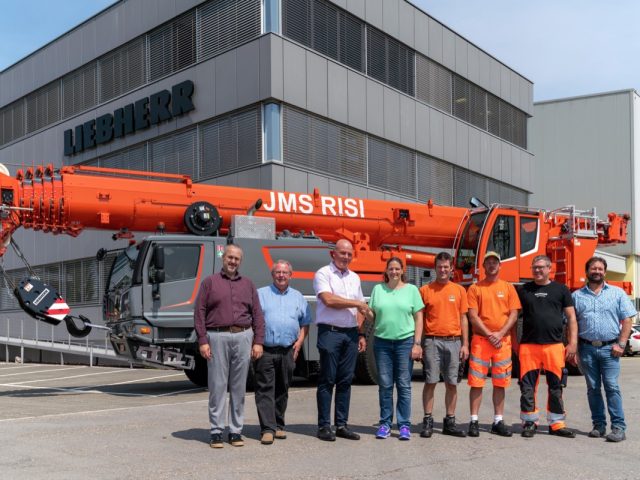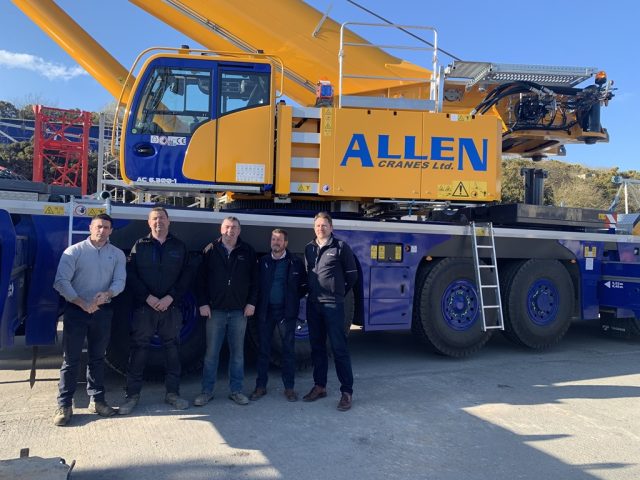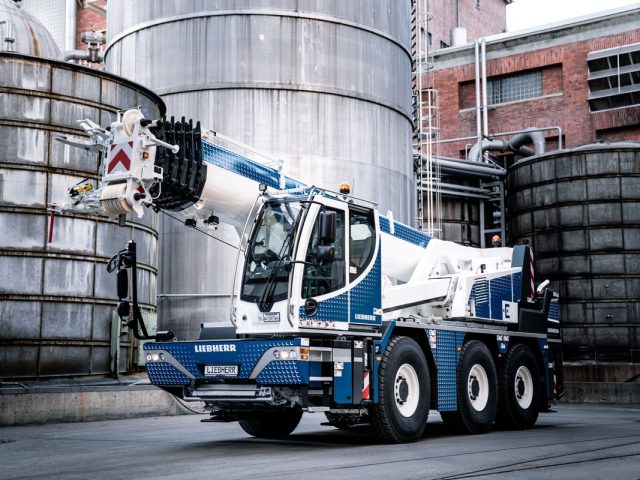- At 66 metres, LTM 1120-4.1 has the longest telescopic boom in the 4-axle class
- Its outstanding lifting capacity and compact design makes the Liebherr 120 tonne crane perfect for jobs in the petrochemicals industry
- Mintor Srl specialises in the construction and assembly of industry plants
The requirements placed on mobile cranes for working in refineries are wide-ranging – long booms, compact design and, above all, high safety standards. The new Liebherr LTM 1120-4.1 mobile crane supplied to the specialist in the construction and assembly of industrial plants, Mintor Srl, was able to demonstrate its strengths recently when carrying out repair work in one of the largest refineries on the Mediterranean. At 66 metres, the 120-tonne crane has the longest telescopic boom in the 4-axle class and can hoist loads that were previously the domain of 5- axle cranes.
The Sarlux refinery on an industrial estate in Sarroch on the south coast of Sardinia, west of the capital Cagliari, is one of the largest refineries on the Mediterranean. It is just a few kilometres away from the headquarters of Mintor, which is involved in the fields of technical consultancy, production, assembly and maintenance of industrial plants in many different sectors of industry. The company has been working in the oil and gas industry, petrochemicals, chemicals, electricity and food production for over twenty years.

LTM 1120-4.1 perfect for jobs in petrochemical plants
Mintor’s cranes find a wide field of activity at the Sarlux refinery. The LTM 1120-4.1 is one of the newest mobile cranes and features a compact design together with a long, powerful telescopic boom. That makes it perfect for working in the petrochemicals industry. Giorgio Aru, Purchasing Manager at Mintor, explains: “We value the flexibility and reliability of the Liebherr 120 tonne crane. The precision of the crane movements is extremely important for working in oil and gas plants. High safety standards are essential for our company.”
A hoist height of 58 metres was required for the job on the flue’s emission system at the refinery. The 66-metre telescopic boom was easily long enough to reach this height. This meant that there was no need to erect lattice extensions to reach the hoist height, although this would normally have been necessary.
Hoisting just half a tonne at a radius of 18.4 metres also failed to challenge the LTM 1120-4.1. Only 15.4 tonnes of ballast had to be used, around half the maximum possible counterweight. However, the constricted conditions in the refinery certainly proved challenging. This meant that the option of using a compact 4-axle mobile crane was a major benefit.
Great economy and flexibility
The Liebherr LTM 1120-4.1 can tackle jobs that normally would require a 5-axle crane, eliminating all the logistics work needed for the larger model. Because a 4-axle crane delivers benefits in terms of licensing and road permits, it can tackle jobs faster and with greater flexibility. The design of a 4-axle crane also enables it to tackle jobs where there is insufficient space for larger cranes. On constricted sites, in particular, Liebherr’s VarioBallast® and VarioBase® innovations deliver enhanced performance, flexibility and safety for this new crane model.
The VarioBallast® on the LTM 1120-4.1 enables the crane to operate with a ballast radius of 3.83 or 4.77 metres. The ballast radius can be reduced by 940 millimetres quickly and easily using standard, mechanically adjustable ballasting cylinders when site conditions get tight. The large ballast radius delivers higher performance and often also cost benefits by reducing ballast transport, as many crane jobs can be completed with fewer counterweights.
The VarioBase® variable support base makes it possible to working constricted areas safely. The maximum lifting capacities are calculated individually and precisely for every situation. This ensures safe working practice with any chosen support base.





















